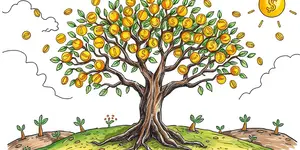
In an era where financial choices are more complex than ever, finding the right tools can make all the difference between stress and confidence. This guide dives deep into the best-in-class personal finance apps, offering practical insights to help you master your money and plan for a secure future.
Whether you’re tackling everyday budgeting or plotting long-term investments, the apps covered here will empower you to take charge of your financial journey.
Managing income, expenses, savings, debts, and investments by hand can become overwhelming. With so many accounts, subscriptions, and financial goals vying for attention, it’s easy to lose track of where your money goes.
Streamline your money management by choosing apps that automate tracking, offer clear visualizations, and send timely alerts. A reliable tool can transform budgeting from a chore into a clear roadmap for reaching milestones like emergency funds, vacation savings, or retirement.
Before diving into app features, it’s essential to ground yourself in sound planning methods that these tools can support. Two of the most popular budgeting approaches are:
Whichever framework you choose, the principle of “pay yourself first” remains key: set aside savings or investment contributions before covering other expenses.
Many apps connect directly to your bank accounts, providing automated expense categorization and real-time syncing so you can stick to your plan without manual data entry.
Understanding user feedback and platform ratings can guide your choice. Here’s what you need to know:
When evaluating an app, consider how it supports your priorities:
Personal finance apps are most effective when paired with regular review habits. Schedule a weekly check-in to reconcile transactions, adjust budgets, and celebrate progress toward goals.
Many tools offer educational content—articles, tutorials, and webinars—to boost your financial literacy. By combining technology with intention, you’ll cultivate a holistic approach to personal finance that goes beyond mere expense tracking.
Couples and families can use shared features to foster open communication about money, set joint targets, and allocate allowances for individual spending. Transparency and accountability are key components of long-term financial harmony.
The next wave of personal finance apps will center on:
As apps evolve, they’ll continue to blend automation with education, helping users make smarter choices effortlessly.
Choosing the right personal finance app can be a transformative step toward financial freedom. Whether you prefer granular control or automated simplicity, there’s a solution tailored to your needs.
Explore the tools highlighted in this guide, experiment with free trials, and adopt the budgeting principles that resonate most with your lifestyle. With consistency and the right digital companion, you’ll build stronger money habits, reduce financial stress, and move confidently toward your biggest goals.
References













